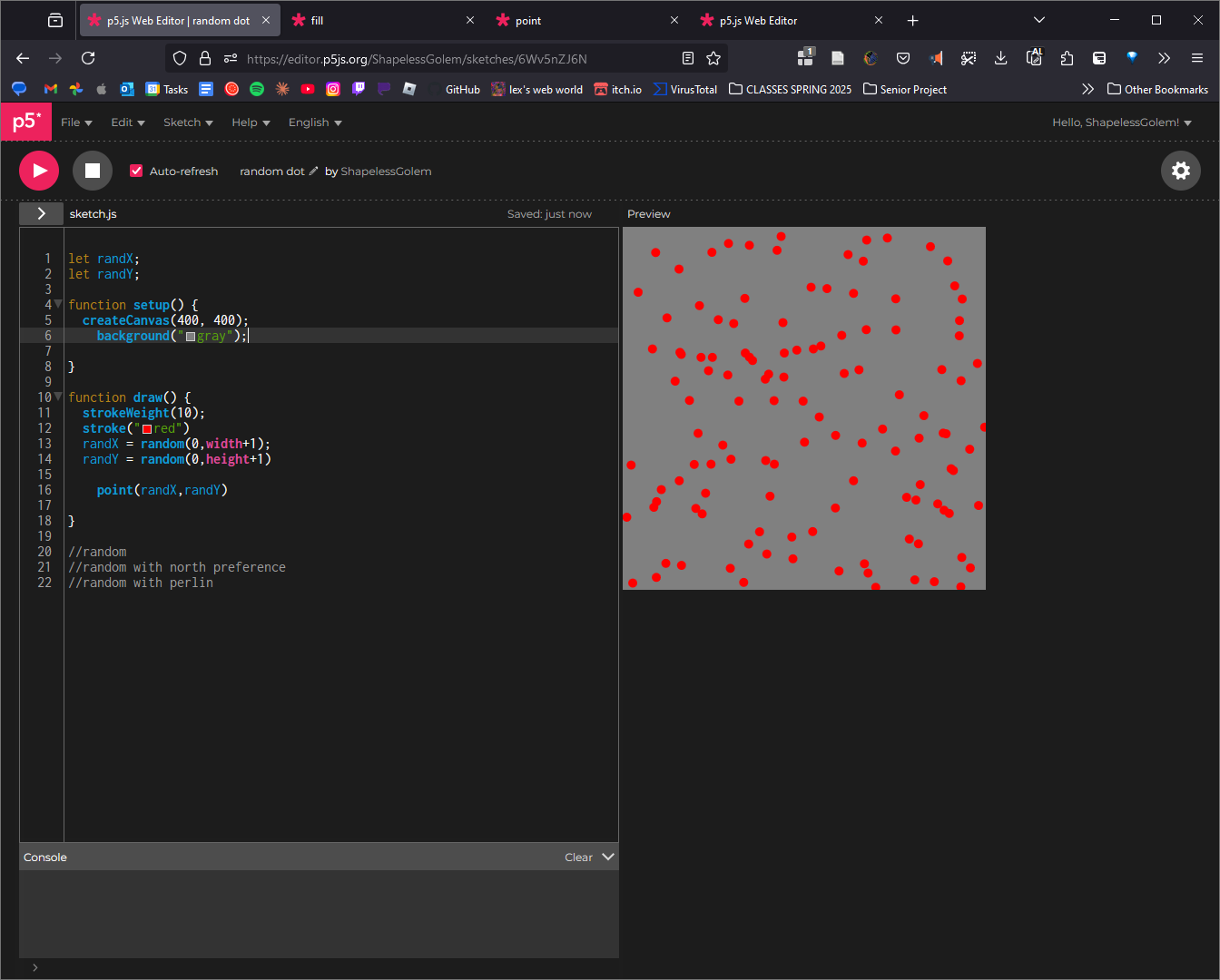The Iceberg.
my goal is to make an iceberg tracker. not a real iceberg don’t worry.
 I started with just making a random point generator and then Lee suggested we use Perlin Noise to move the point around the screen. with that I was able to make this.
I started with just making a random point generator and then Lee suggested we use Perlin Noise to move the point around the screen. with that I was able to make this.
 we then added a northward preference by giving the Y value a range of numbers with more negative than positive #‘s.
we then added a northward preference by giving the Y value a range of numbers with more negative than positive #‘s.
 that’s all I had time for in class. the next time I thought of this project was in a New Media club meeting, super fun to show it off as I was making it. Some of the students were also working in processing!
that’s all I had time for in class. the next time I thought of this project was in a New Media club meeting, super fun to show it off as I was making it. Some of the students were also working in processing!
I was able to find this image of Antarctica and a free iceberg PNG and that made a world of a difference (or–just the lower part of the world.)
 my
my yearCounter()’s algorithm was a little off. it would count a day up with the month at the same time and time travel is not allowed… also days were longer than 31 (for this sketch each month is 31 days)
I then fixed the time travel and made the textbox more readable
 honestly that’s it. total of ~2 hours of work to make this prototype. as an added challenge I can make it have collision detection but I don’t feel like it. icebergs can and will go on land.watch out
honestly that’s it. total of ~2 hours of work to make this prototype. as an added challenge I can make it have collision detection but I don’t feel like it. icebergs can and will go on land.watch out

WATCH OUT FOR THE LAND ICEBERG
Get Drawing Moving and Seeing code
Drawing Moving and Seeing code
| Status | In development |
| Category | Other |
| Author | lex |
More posts
- Text Trip DEmO!<3May 13, 2025
- a mess of fun stuff.Apr 17, 2025
- rollie polliesApr 17, 2025
- LOGO QuiltFeb 06, 2025
Comments
Log in with itch.io to leave a comment.
This produces really nice output. I love the slow-moving icy little berg. I know you said you weren’t implementing collision detection here, but I thought I’d drop this useful link in case you’re interested later. It’s for Processing, but could be ported to p5.js (or maybe someone’s already done it). Here is the point/triangle collision detection algorithm.
I appreciate the feedback and thank you for the algorithm!! When I have some free-time post-grad I’ll revisit all of these projects to keep the practice up, I intend to implement it at some point then. Leaving this reply as both a reminder and a thank you for the inspiration.
someone has definitely done it but I felt inspired to take on the challenge. Here is my implementation of the algorithm (adapting the example)
that works nicely!